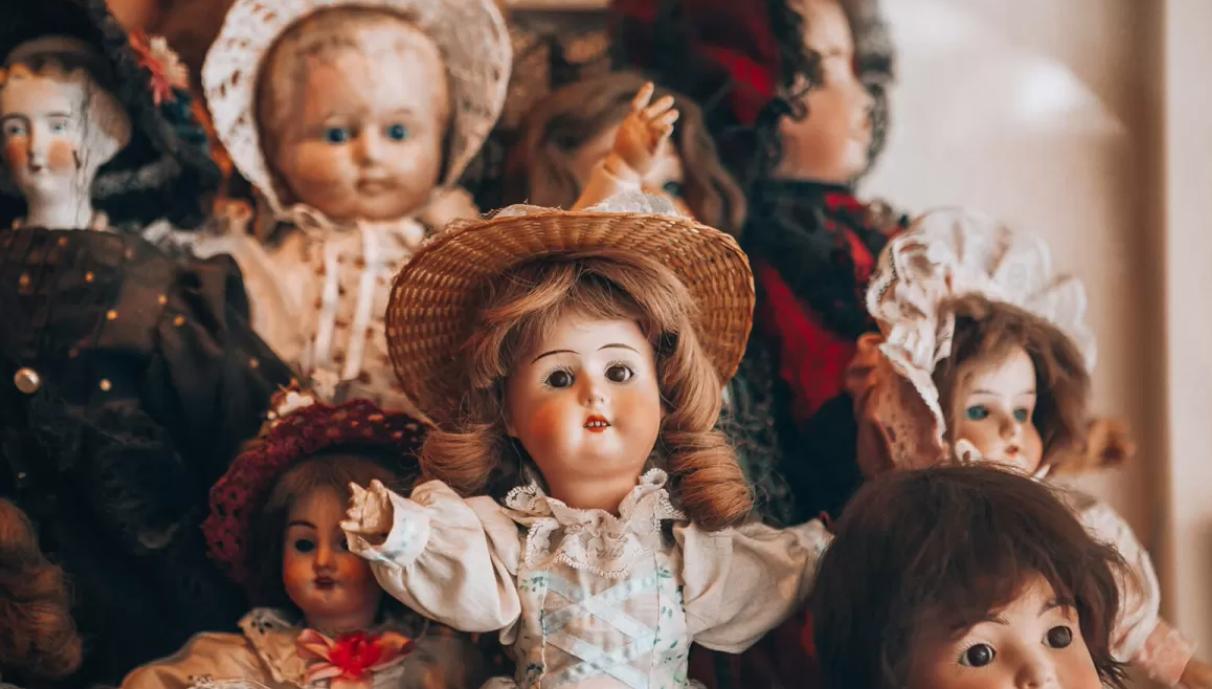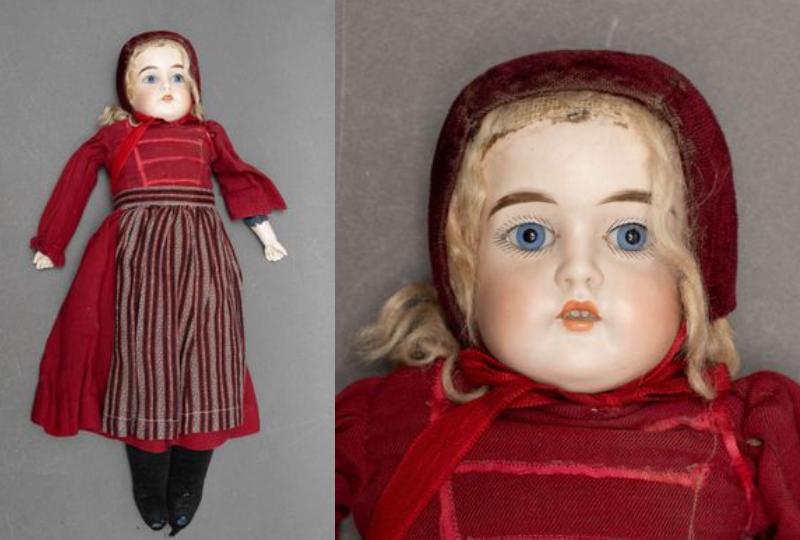Identifying antique dolls can be both exciting and challenging for collectors and enthusiasts alike. Knowing how to identify antique dolls—whether through their material, markings, or style—helps distinguish a true antique from modern reproductions. With a wide range of materials used throughout different time periods, as well as markings and styles unique to each manufacturer or era, it takes a trained eye to properly evaluate a doll’s age and authenticity. Whether you’re new to doll collecting or a seasoned pro, this guide will help you confidently learn how to identify antique dolls by focusing on the three key factors: material, markings, and style.

Why Identifying Antique Dolls Matters
Understanding the significance of identifying antique dolls goes beyond their age or origin; it impacts their historical importance, collector value, and preservation. Antique dolls are windows into the cultural and historical context of their time, reflecting trends in fashion, technology, and societal changes. From the simple wooden dolls of the 1700s to the intricate bisque dolls of the 19th century, each piece tells a unique story.
As doll collecting grows in popularity, demand for well-preserved, authentic antique dolls has surged, sometimes driving values into the tens of thousands. Proper identification is critical for accurate valuation, as even minor misidentifications can significantly alter a doll’s worth. Dolls mistakenly labeled from the wrong era or maker may be over- or under-valued, negatively affecting their marketability. Additionally, modern reproductions misrepresented as antiques can lead to financial losses for buyers and sellers. Correct identification helps collectors avoid these pitfalls and appreciate the true value of their dolls.
How to Identify Antique Dolls by Material
The material from which a doll is made is often the first indicator of its age and origin. Each type of material reflects a specific time period, and knowing how to recognize these materials will greatly aid in determining a doll’s authenticity.
Identifying Common Antique Doll Materials: Porcelain, Bisque, Wax, and More
Collectors should start by familiarizing themselves with the most common materials used to craft antique dolls. This will help narrow down the era in which the doll was produced. Antique dolls were made from a variety of materials, each indicative of the time period and region in which they were crafted. Some of the most common materials include porcelain, bisque, wax, wood, and composition. Porcelain dolls, with their smooth, glazed surfaces, were popular in the early 1800s, while bisque dolls—similar to porcelain but with a matte finish—became widely favored later in the century. Wax dolls were often more lifelike, thanks to the material’s ability to mimic skin tones, while composition dolls, made from a mixture of materials, became popular in the early 1900s due to their durability.
Determining the Material of an Antique Doll
By learning how to distinguish between different materials, collectors can make an informed decision about a doll’s likely age and origin. Each material has distinct characteristics that can be revealed through a careful physical examination. To determine the material of an antique doll, careful inspection is required. Porcelain and bisque dolls, for instance, are easily identified by their smooth and unglazed textures, respectively. Wax dolls have a slightly translucent, soft finish, while composition dolls have a solid, opaque appearance, often showing wear and cracking over time. By gently tapping the head or limbs, one can sometimes distinguish between heavier porcelain and the lighter composition material. Ensuring the doll has not been restored with modern materials is also essential in identifying its original composition.
Dating Dolls Based on Material Composition
Materials are strong indicators of when a doll was made. Collectors can use this knowledge to establish an approximate time frame for their antique doll. The materials used to make dolls can help date them. For example, porcelain dolls were common from the early to mid-19th century, while bisque dolls were popular from the 1860s to the early 1900s. Composition dolls, made of a mix of sawdust and glue, were widely produced from the 1920s through the 1940s. Wax dolls were prominent in the early 1800s, particularly in England and France. By researching the material, collectors can narrow down the doll’s time period and sometimes even pinpoint its place of origin.
How to Identify Antique Dolls by Markings
Markings provide valuable clues about a doll’s manufacturer and the time period in which it was made. Learning where and how to find these markings is essential for any collector.
Finding Markings on Antique Dolls: Common Locations
Knowing where to look for markings on an antique doll is the first step in the identification process. Different manufacturers often placed their stamps or engravings in specific areas on the doll. Markings on antique dolls are often found on the back of the head, neck, shoulders, or lower back. These markings may be stamped, engraved, or painted and typically include the manufacturer’s name, logo, or a mold number. Sometimes, the country of origin or patent dates are also included. Collectors should examine these areas carefully, as markings may fade or be obscured by clothing or wear over time.
Decoding Manufacturer Marks, Numbers, and Symbols
Once you’ve located the markings, the next step is to decode them. Each manufacturer had its own system of identifying its dolls, so it’s important to recognize the meaning behind the various marks and symbols. Many antique doll manufacturers used specific markings to distinguish their creations. For example, French dolls often bear marks like “Jumeau” or “Bru,” while German dolls may have “Armand Marseille” or “Kestner” imprinted on them. Numbers can indicate the doll’s model or size, and symbols such as stars or crowns may represent specific lines or series. Knowing how to decode these markings allows collectors to verify a doll’s maker and production date more accurately.
Researching Markings to Verify Doll Authenticity
To confirm the authenticity of a doll, collectors should use multiple sources to research its markings. This step is vital in verifying the doll’s provenance and value.
Once markings are identified, collectors can cross-reference them with online databases, reference books, or auction catalogs to verify the doll’s authenticity. Certain manufacturers had distinct hallmarks that changed over time, allowing collectors to date the doll with precision. Consulting experts or attending antique doll conventions can also provide valuable insights into the significance of specific markings.
How to Use Style to Identify Antique Dolls
The style of a doll—including its clothing, hairstyle, and facial features—can reveal important information about its origin and era. These elements help pinpoint when and where a doll was made.
Recognizing Antique Doll Clothing Styles by Era
Doll clothing can be a strong indicator of its time period. By analyzing the fashion, collectors can often determine the approximate era of the doll. The style of a doll’s clothing can provide significant clues about its age. Dolls dressed in Victorian-era fashion, with voluminous skirts and petticoats, were likely produced in the mid- to late-1800s, while simpler styles from the early 1900s might indicate an Edwardian influence. It’s important to distinguish between original clothing and replacements, as this can affect the doll’s value.
Identifying Era-Specific Hairstyles and Facial Features
A doll’s hairstyle and facial features can give further clues about its era and origin. Each historical period had its own distinct aesthetic that can be identified in the doll’s design. Different eras favored particular hairstyles and facial features for dolls. For example, dolls from the 1800s often had elaborate, curled hairstyles, while those from the early 1900s might sport short bobs or simple braids. The facial features of French dolls tend to be more delicate and finely painted, while German dolls often have rounder faces with larger eyes.
Distinguishing Between French, German, and American Doll Styles
Each country’s doll manufacturers developed distinct styles that can help in identifying the origin of a doll. Learning the nuances between these styles is a valuable skill for collectors. French, German, and American doll manufacturers each developed their own distinct styles. French dolls, such as those made by Jumeau, are known for their elegance and fine craftsmanship, while German dolls, like those by Kestner, are often more affordable but equally detailed. American dolls, particularly composition dolls like those made by Madame Alexander, tend to have a more playful and childlike appearance.

Conclusion
Identifying antique dolls requires careful observation of their material, markings, and style. By learning how to identify antique dolls through these unique characteristics, collectors can accurately determine their age, origin, and value. Armed with this knowledge, you can confidently explore the world of antique dolls, ensuring that each piece in your collection is a true treasure.
FAQ
What Are the Most Valuable Antique Dolls by Material?
Porcelain and bisque dolls, particularly those made by famous manufacturers like Jumeau or Bru, tend to be the most valuable. Rare wax dolls can also fetch high prices, especially those in excellent condition.
How Can I Tell if an Antique Doll Has Been Restored?
Look for inconsistencies in the material or texture, particularly around the head, hands, and feet. Restoration work may also leave behind visible seams, cracks, or mismatched paint.
What Are the Best Resources to Further Research Antique Dolls?
Reference books, online databases, and auction catalogs are excellent starting points for researching antique dolls. Additionally, attending doll shows or consulting with experts can provide valuable insights into specific manufacturers or doll types.
